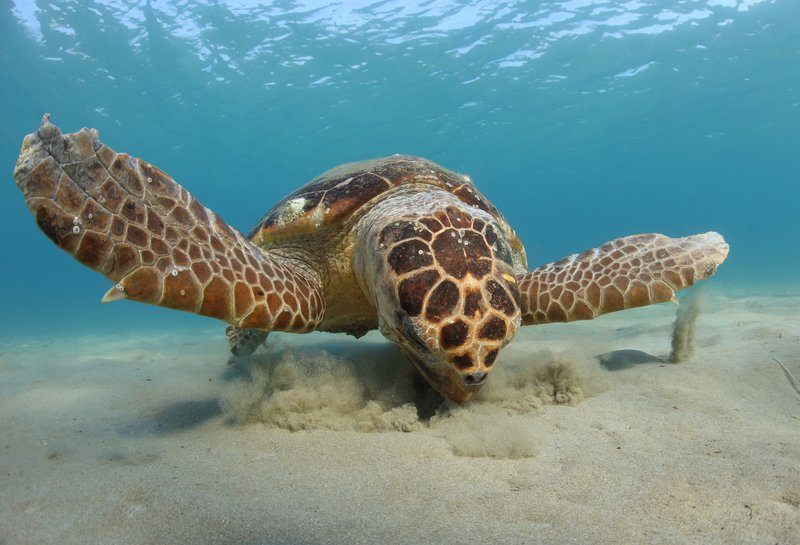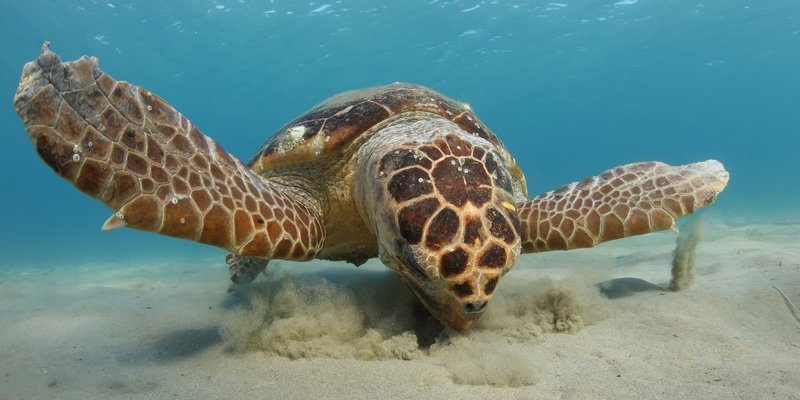
Loggerhead turtles are a type of marine turtle, and you might think they’re only found in the ocean. Surprisingly, they have a wide range of habitats, from coastal waters to sandy beaches. These turtles behave like world travelers; they migrate thousands of miles between feeding and nesting areas. In this article, we’ll uncover where loggerhead turtles can be found—each habitat playing a crucial role in their survival and life cycle. So, grab a cup of coffee, and let’s embark on this underwater adventure together!
Loggerhead Turtle Habitats: An Overview
Loggerhead turtles (Caretta caretta) prefer warm and temperate oceans, making their homes in various marine environments. You might be wondering what specific locations they frequent. The truth is, loggerheads are found in almost all the world’s oceans, except for the polar regions. Their extensive range includes:
- The Atlantic Ocean
- Pacific Ocean
- Indian Ocean
Most notably, loggerhead turtles are commonly spotted along the coasts of the United States, from Florida to the Carolinas. They often migrate to warmer waters, which can be compared to how we seek out sunshine during chilly seasons. Their choice of habitat isn’t just about warmth; it’s also about access to food and nesting sites.
Feeding Grounds: Where Loggerheads Find Food
Loggerhead turtles are omnivores, enjoying a diverse diet. This makes their feeding grounds essential. They primarily feed on:
- Jellyfish
- Crabs
- Sea urchins
- Shellfish
You might think of these food sources as their preferred snacks, all found in different habitats. For example, jellyfish are often abundant in open waters, while crabs may lurk among coastal reefs. Loggerheads are known to travel long distances to find their favorite meals, munching their way through the ocean like a buffet.
The presence of seagrass beds is also crucial. These underwater gardens provide not just food but also shelter. When loggerheads are in these areas, they can often be seen grazing on seagrass, just like cattle on a grassy plain. It’s fascinating how these ecosystems interconnect!
Nesting Sites: The Importance of Beaches
One of the most critical parts of loggerhead turtles’ life cycle involves nesting on beaches. Female loggerheads return to the coast where they were born to lay their eggs—talk about a homecoming! They often nest on sandy beaches, which offer the right conditions for their eggs to develop.
Typically, you can find loggerhead nests along the southeastern coast of the United States, particularly in states like Florida and Georgia. These areas are known for their warm sandy shores, perfect for nesting. Each female can lay between 100 to 126 eggs at a time, buried in nests she digs in the sand.
Here’s the thing: nesting sites are crucial for their survival. Coastal development and human activity can disrupt these areas, which is a growing problem. Conservation efforts aim to protect these critical habitats by monitoring nesting sites and educating the public about the importance of preserving these beautiful beaches.
Migration Patterns: The Journey of Loggerhead Turtles
Loggerhead turtles are champions of migration, traveling thousands of miles between feeding and nesting sites. It’s like planning a long road trip, except their “routes” are dictated by ocean currents and water temperatures. You might be curious about how far they actually go—some loggerheads migrate over 12,000 miles between the shores of the United States and feeding grounds in the Atlantic!
During these migrations, loggerheads use their natural instincts and the Earth’s magnetic field to navigate. This remarkable ability is still a topic of research, with scientists trying to understand how turtles find their way. Imagine using your GPS without a phone! It’s a truly awe-inspiring journey that highlights the resilient nature of these creatures.
Loggerhead Presence in Rivers and Estuaries
While loggerhead turtles are mainly associated with oceanic environments, they’re occasionally spotted in rivers and estuaries. These areas serve as important habitats, especially for younger turtles. The shallow, warm waters offer a safe haven for juvenile loggerheads to thrive, feeding on various plants and small organisms.
Estuaries act like a nursery where baby turtles can grow up before venturing out into the open ocean. However, the connection between river systems and the ocean is delicate. Pollution and habitat loss can have dire consequences for these young turtles. Understanding this relationship helps us appreciate how vital clean waterways are for their survival.
Conservation Efforts to Protect Loggerheads
Given the challenges loggerhead turtles face—like habitat loss, climate change, and human interference—conservation efforts are more important than ever. Several organizations work tirelessly to protect these magnificent creatures and their habitats. This includes:
- Monitoring nesting sites
- Reducing bycatch in fishing
- Protecting feeding areas
Conservation initiatives aim to educate communities about the importance of loggerheads and what we can do to help. Simple actions, like keeping our beaches clean and respecting nesting sites, can make a big difference. Every little bit counts!
Loggerhead turtles are truly remarkable creatures, reminding us of the beauty and complexity of marine life. From the warm beaches where they nest to the vast oceans they roam, their habitats play a vital role in their survival. As we learn more about these turtles, we also understand the importance of conserving their environments.
So, the next time you think about loggerhead turtles, picture them swimming gracefully in the ocean or nesting on a sandy shore. Let’s appreciate their journey and actively participate in ensuring a future where these ancient mariners continue to thrive in the waters they call home. A little love and care can go a long way in preserving their beautiful habitats for generations to come!

